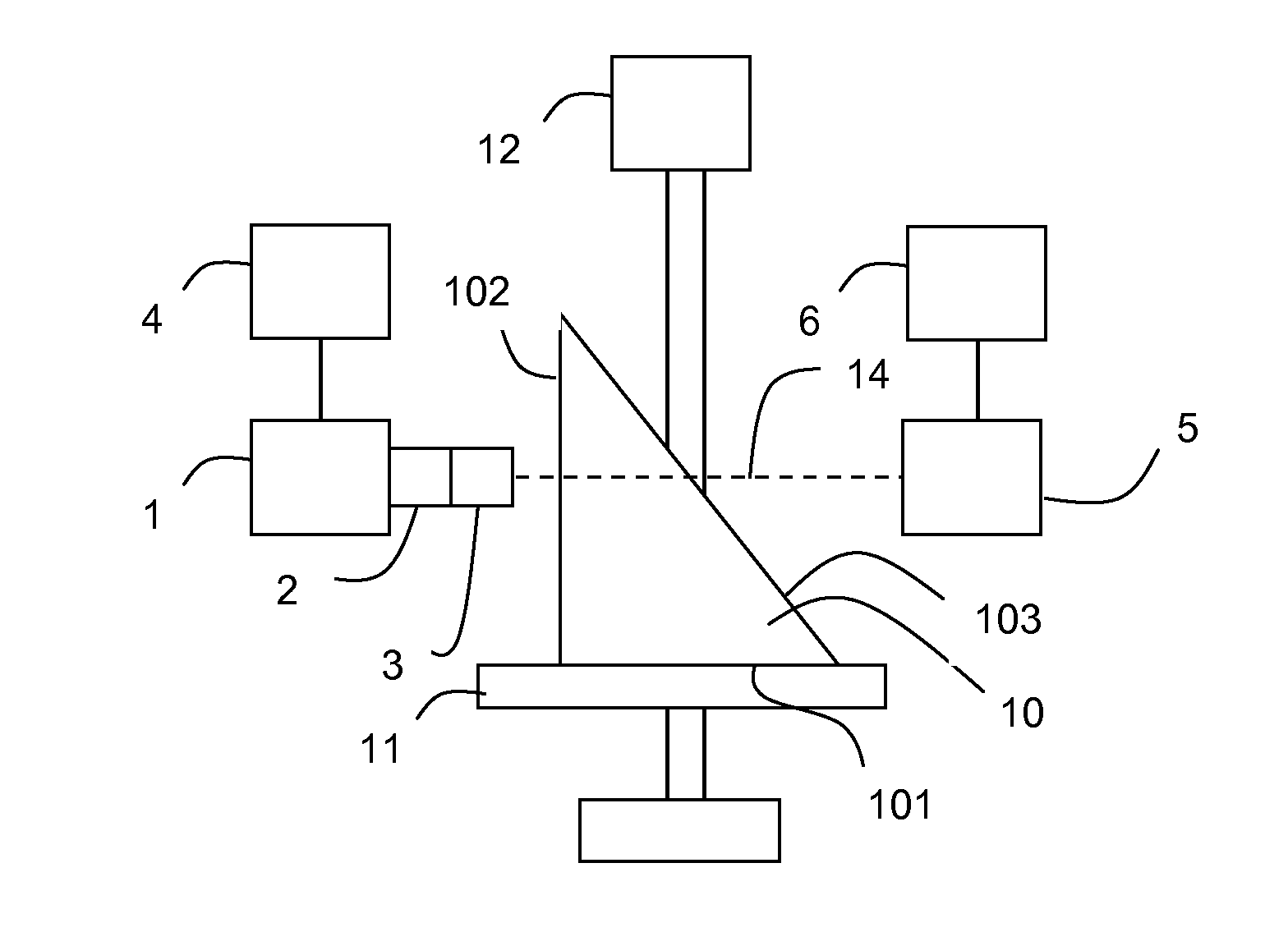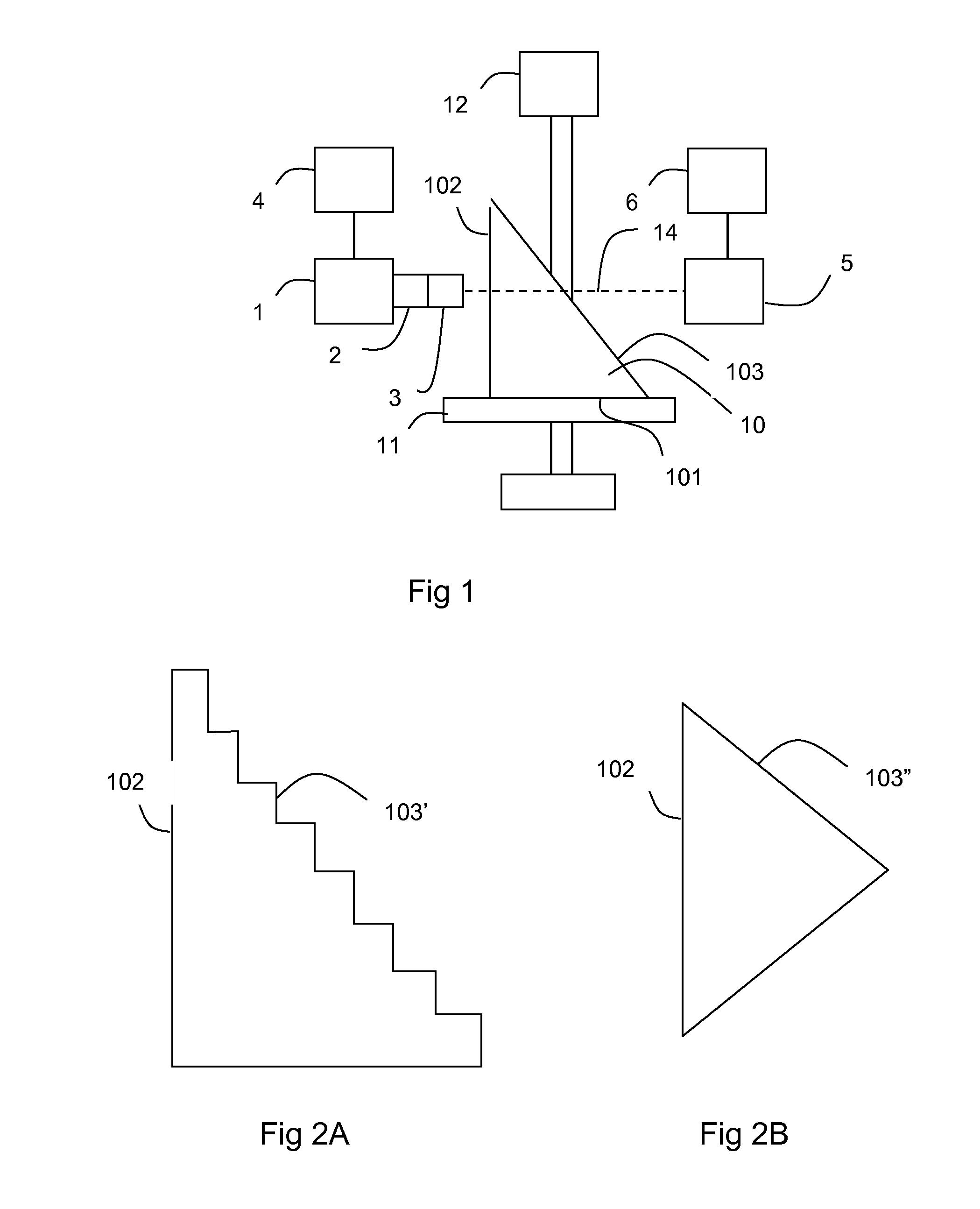Method and apparatus for measurement of concentration of a specific analyte in a biological material
a technology of biological material and concentration, applied in the direction of measurement devices, material analysis through optical means, instruments, etc., can solve the problems of difficult to obtain adequate calibration, cumbersome and expensive methods, limited practical use, etc., and achieve robust and reliable measurement, large structural features, and robust measurement
- Summary
- Abstract
- Description
- Claims
- Application Information
AI Technical Summary
Benefits of technology
Problems solved by technology
Method used
Image
Examples
Embodiment Construction
[0056]Referring to FIG. 1, an exemplary measurement apparatus according to the present invention comprises a radiation source 1 for providing radiation of one or several energy level(s) / wavelength(s). Preferably, the radiation source is an X-ray tube for provision of X-ray radiation of two or more different wavelengths. Preferably, the X-ray tube operates in the range 20-150 kVp. The output radiation from the radiation source is preferably directed towards a target area through a collimator 2 and a lens 3. The radiation source is controlled by means of a controller 4.
[0057]On the opposite side of the target area, a detector 5 is arranged to receive radiation transmitted through material arranged in the target area. The detector comprises any mechanism capable of converting energy from detected radiation into signals that may be processed by the apparatus. The detector is preferably a semiconductor detector, comprising an array of semiconductor detector areas. Detector(s) is / are used...
PUM
| Property | Measurement | Unit |
|---|---|---|
| length | aaaaa | aaaaa |
| length | aaaaa | aaaaa |
| length | aaaaa | aaaaa |
Abstract
Description
Claims
Application Information
 Login to View More
Login to View More - R&D
- Intellectual Property
- Life Sciences
- Materials
- Tech Scout
- Unparalleled Data Quality
- Higher Quality Content
- 60% Fewer Hallucinations
Browse by: Latest US Patents, China's latest patents, Technical Efficacy Thesaurus, Application Domain, Technology Topic, Popular Technical Reports.
© 2025 PatSnap. All rights reserved.Legal|Privacy policy|Modern Slavery Act Transparency Statement|Sitemap|About US| Contact US: help@patsnap.com


